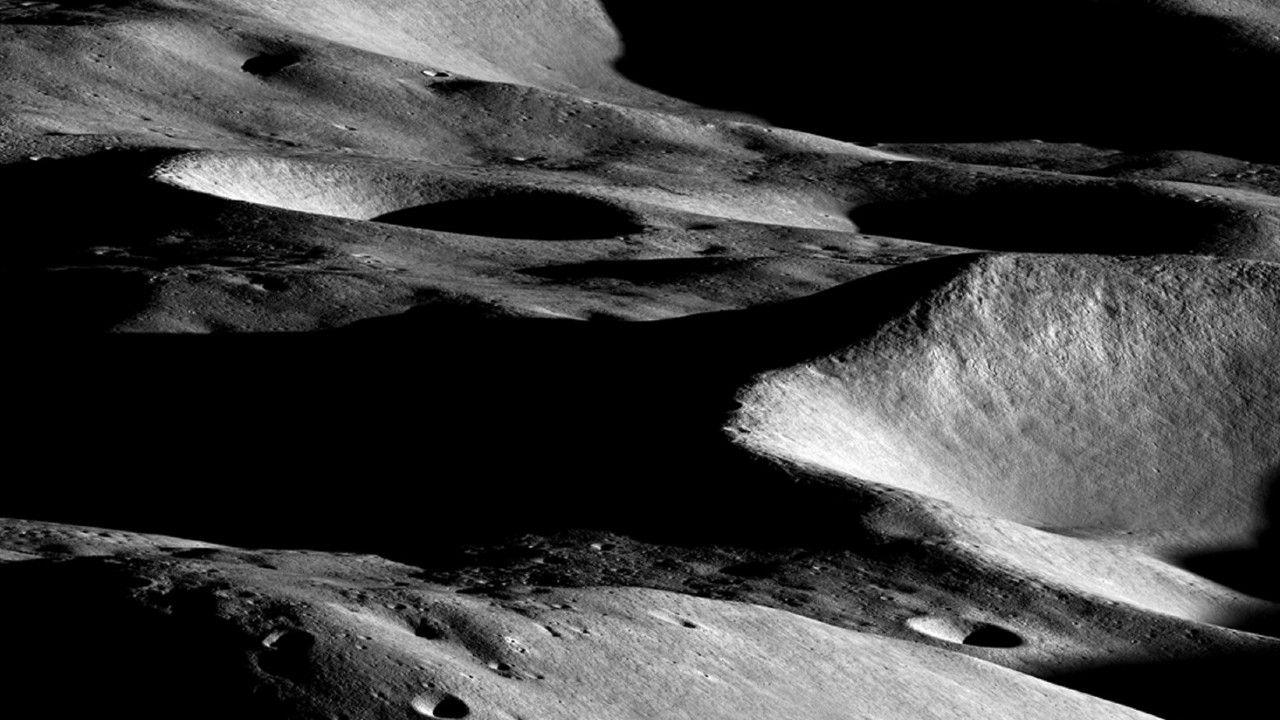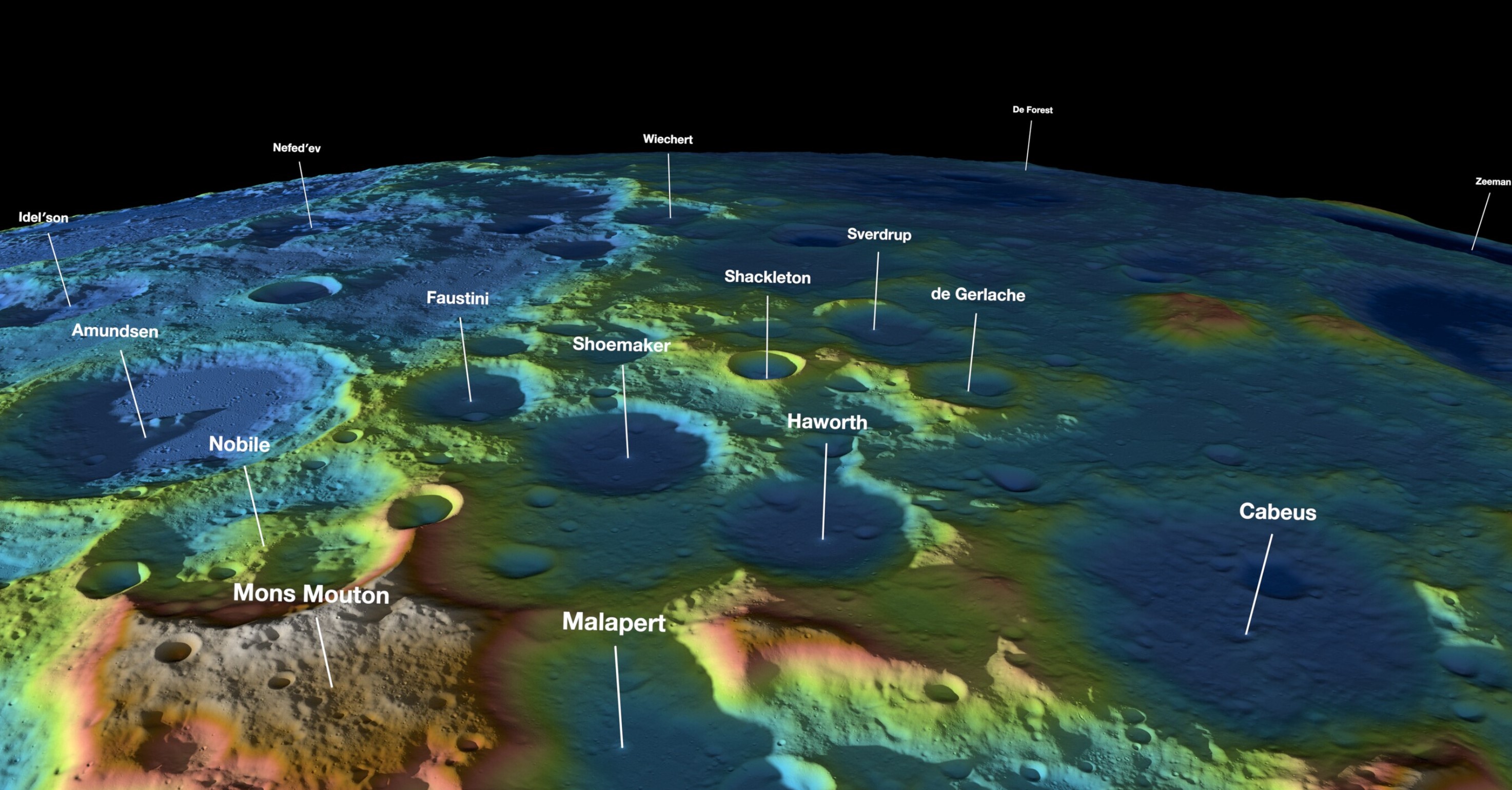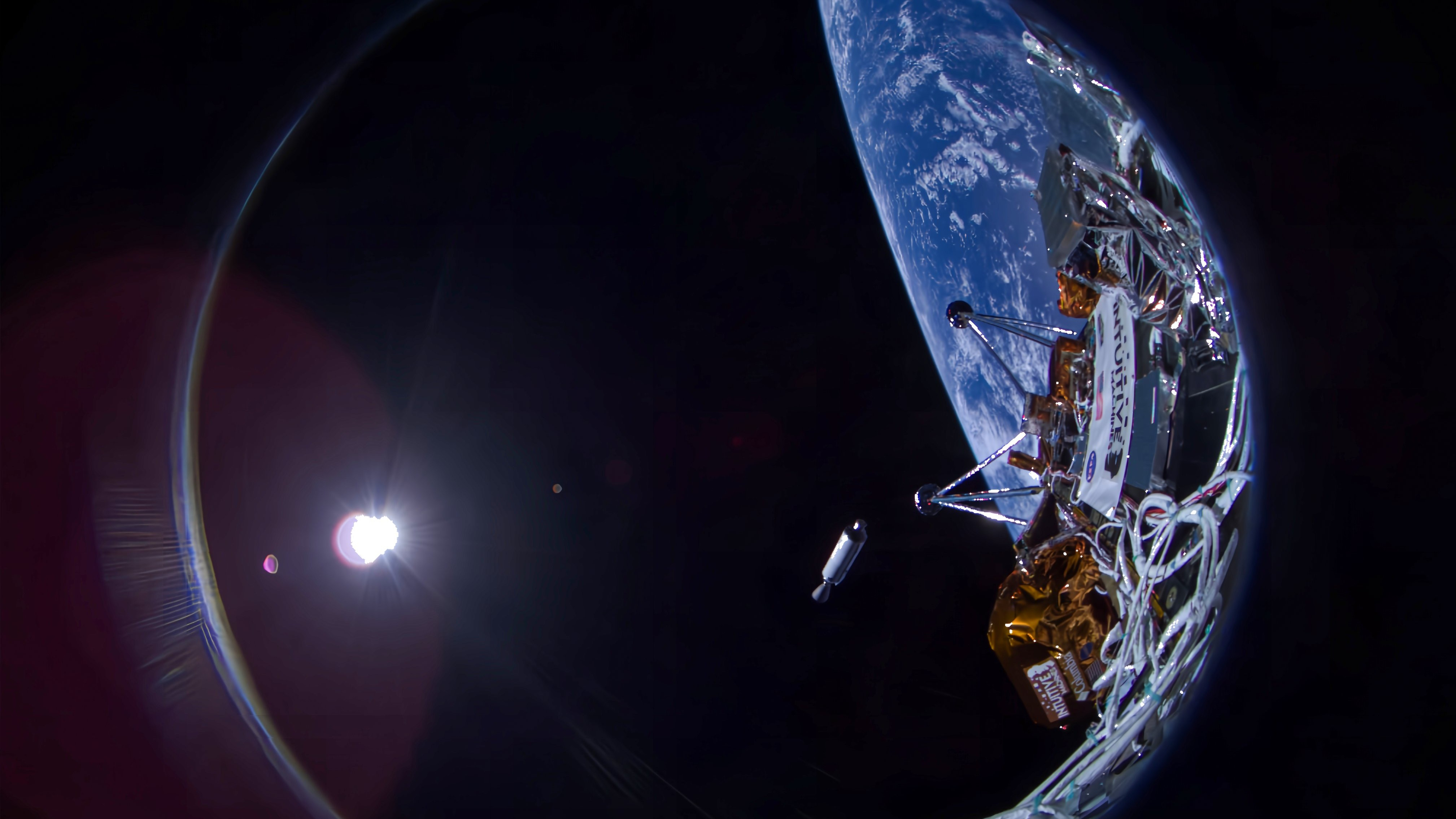
Intuitive Machines' Odysseus mission is targeting touch down near the moon's south pole this week for a historic lunar landing.
The Nova-C lunar lander, named Odysseus, was built by the Houston-based company Intuitive Machines and launched to the moon atop a SpaceX Falcon 9 rocket on Feb. 15 from NASA's Kennedy Space Center in Florida. The mission, known as IM-1, is scheduled to touchdown on the moon on Thursday (Feb. 22), at 5:49 p.m. EST (2249 GMT) in a region near the lunar south pole. If all goes according to plan, Intuitive Machines will be the first private company to reach the moon, and a successful descent will mark the first American soft lunar landing in over 50 years.
Odysseus is carrying six NASA instruments and will attempt its historic landing near Malapert A, a small impact crater about 190 miles (300 kilometers) from the moon's south pole. So, why was this location selected for the IM-1 mission?
The Malapert A crater was not Odysseus' original destination. Initially, the spacecraft was slated to land in Oceanus Procellarum — the largest basaltic plain, also known as a lunar maria, located on the western edge of the visible side of the moon.
Instead, Malapert A is a relatively flat and safe region located within the heavily cratered southern highlands on the side of the moon visible from Earth, NASA officials said in a statement announcing the new landing site in May 2023.

"The decision to move from the original landing site in Oceanus Procellarum was based on a need to learn more about terrain and communications near the lunar south pole, which is expected to be one of the best locations for a sustained human presence on the moon," NASA officials said in the statement.
"Landing near Malapert A also will help mission planners understand how to communicate and send data back to Earth from a location that is low on the lunar horizon."

Although the lunar south pole is a candidate location for NASA's Artemis 3 mission — expected to land astronauts on the moon as soon as 2026 — details of the area's environment remain a mystery to astronomers. -
Therefore, landing near the Malapert A crater offers Odysseus the opportunity to better manage risks for future Artemis landings and gather data about the lunar environment throughout the region.
The IM-1 mission — a private attempt under NASA's Commercial Lunar Payload Services program, or CLPS — aims to demonstrate the lunar spacecraft's landing capabilities and scope out the area for future missions.
IM-1 is the second attempted landing of a private lander supporting the CLPS initiative. The first attempt ended prematurely when Astrobotic's Peregrine experienced a crippling a propulsion anomaly and later fell back to Earth, losing all of its payloads.







